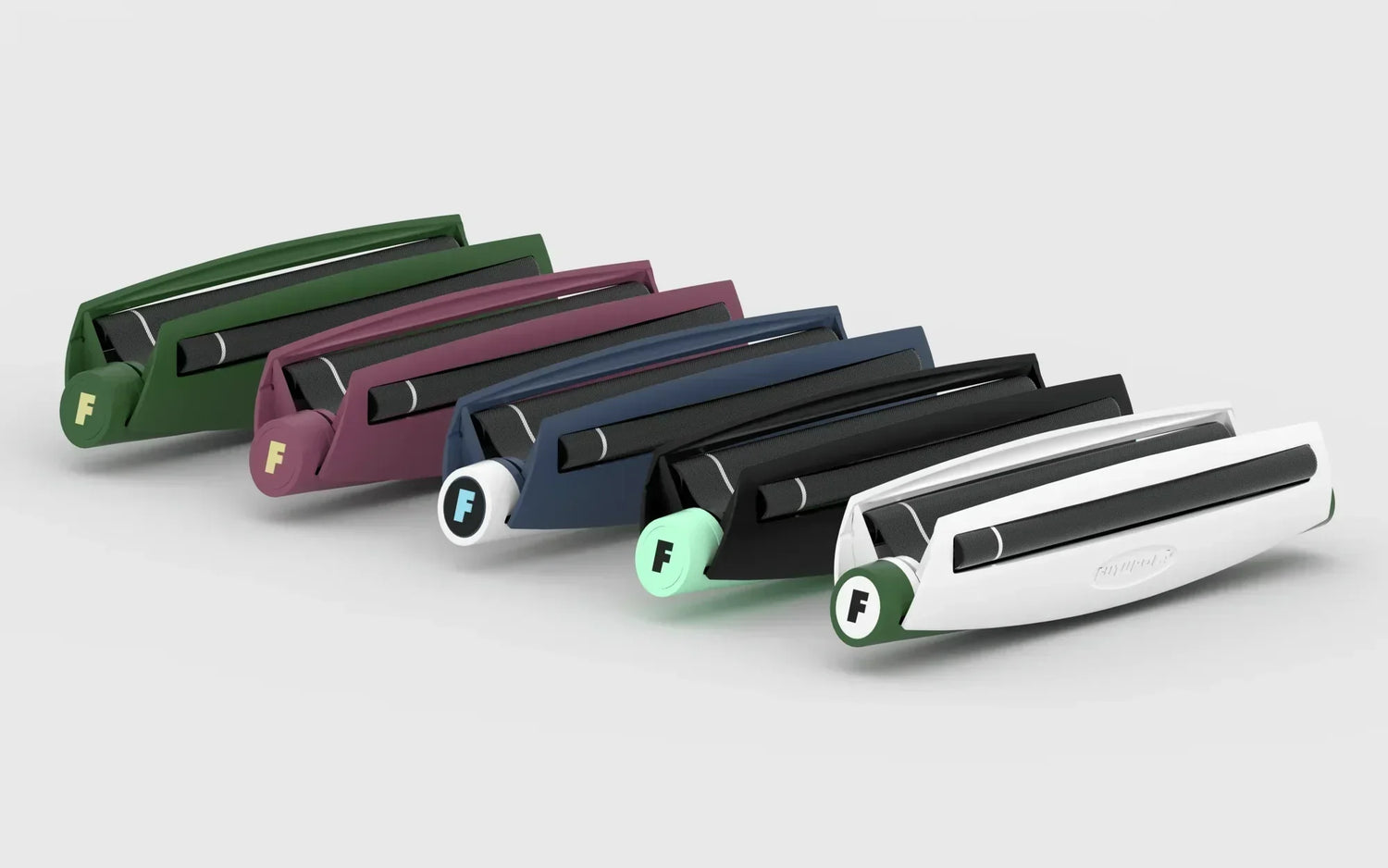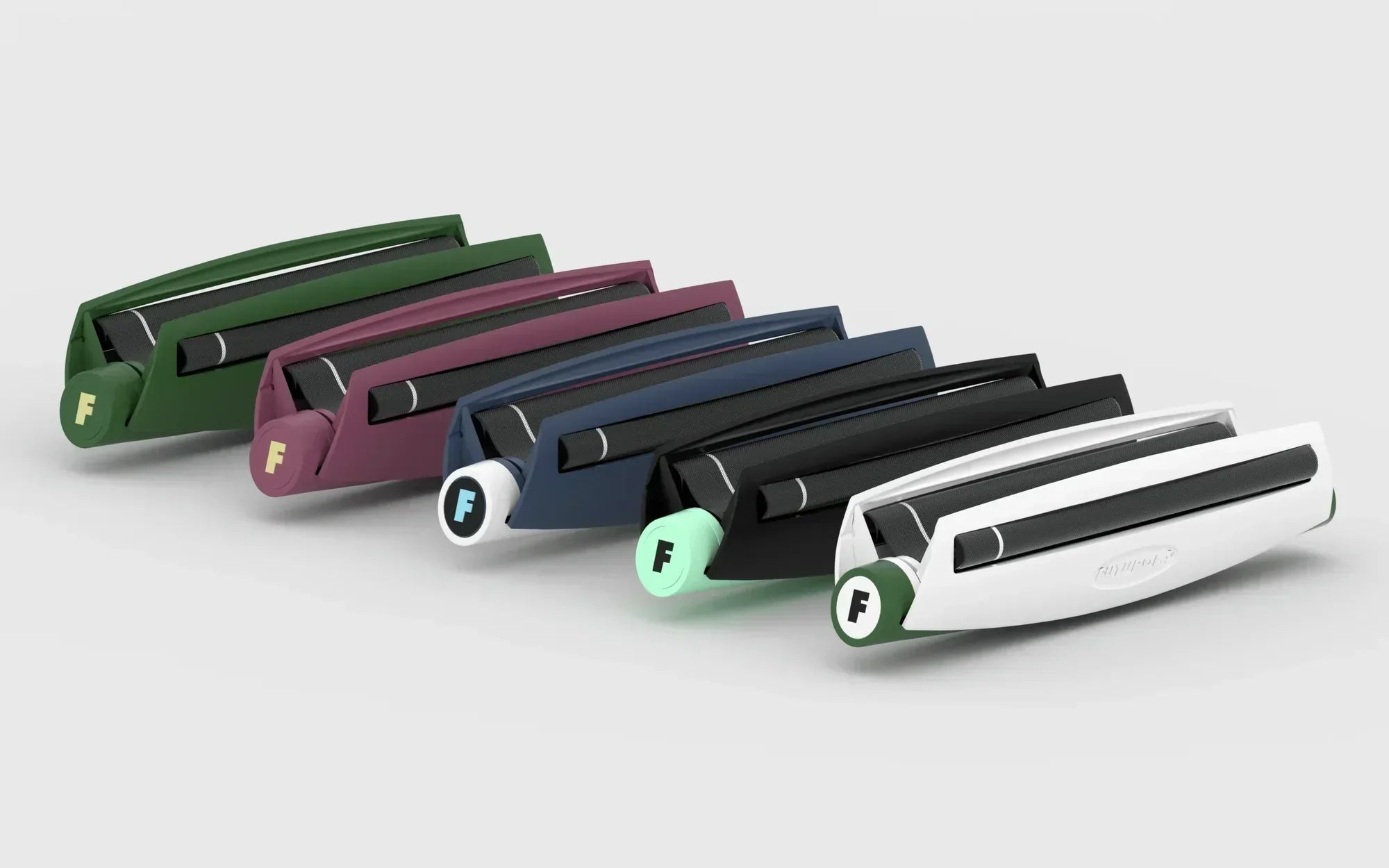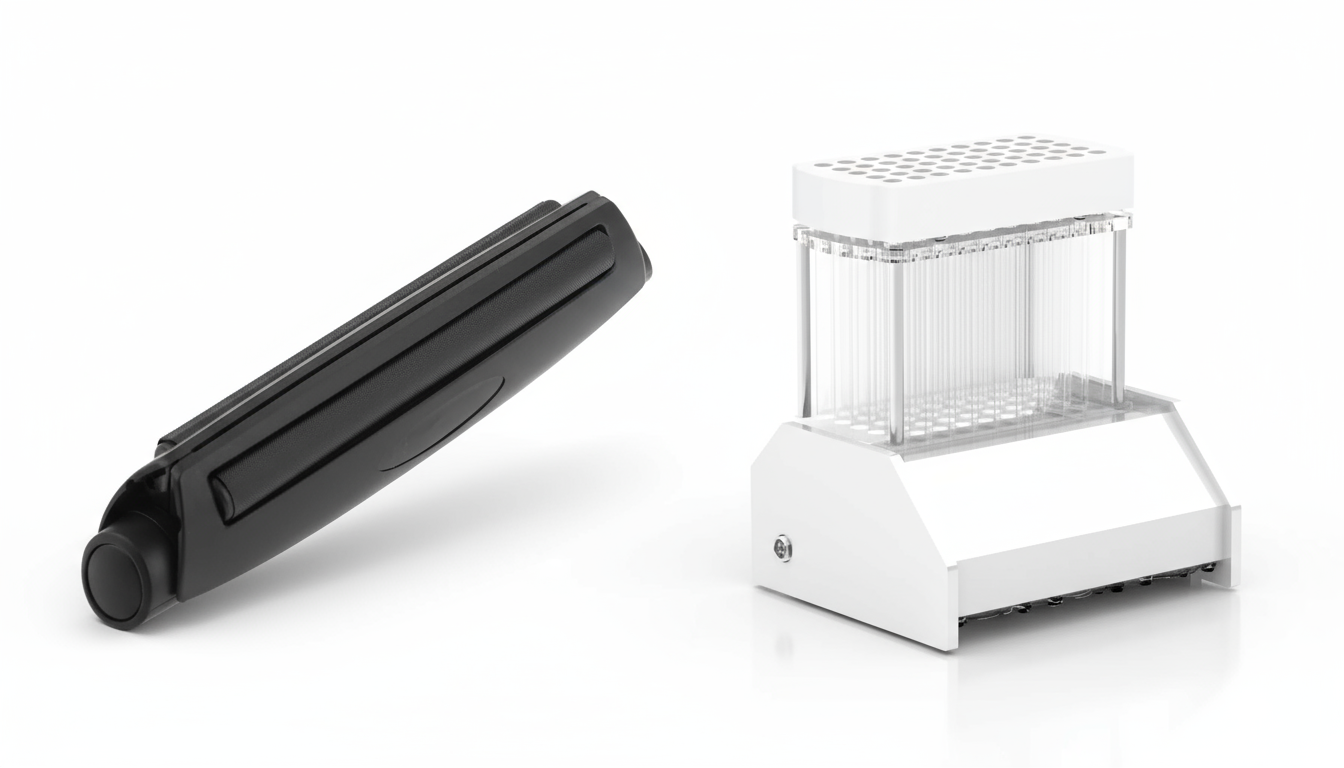You are running a dispensary during peak hours. Customers want pre-rolls now. Your staff is hand-filling cones as fast as possible. Quality suffers. Consistency varies. Labor costs pile up.
Or maybe you're just tired of rolling pre-rolls that perform inconsistently.
The efficiency question matters. Doesn't matter if you're filling five cones for the weekend or five thousand for your business. Electric cone rollers promise speed and consistency. Manual methods cost less upfront. Which actually delivers better results?
Before deciding, it helps to understand the right rolling setup and maintenance tips that keep your results consistent.
This analysis examines both perspectives. You'll get realistic comparisons based on actual usage patterns. Not marketing claims. We'll cover speed, quality, costs, and when each method is most suitable.
Disclaimer: Product pricing, availability, and specifications are subject to change frequently. All information reflects available 2025 data. Verify with current sources before purchasing. Individual results will vary based on user skill level, product selection, and usage patterns.
The Real Difference Between Manual and Electric Cone Filling
Manual and electric filling methods approach the same problem from completely different angles. One relies on your hands and basic tools. The other uses motors and mechanical systems. The gap between them determines which works for your situation.
Manual cone filling means using your hands. A tamping tool. Often, a small funnel or scoop is used to guide material. You pour ground material into the cone. You tap it down. You repeat until complete. Simple tools, basic technique, mostly gravity and hand pressure doing the work.
Electric cone rollers mechanise the filling process. Automated vibration, rotation, or tamping mechanisms do the bulk of the work. Some are simple battery-powered pens that vibrate to settle material. Others are sophisticated machines that fill multiple cones at once with precise density control.
The term "electric cone roller" covers a wide range. Handheld vibrating devices assist manual filling. Single-cone machines automate the entire process. Industrial systems fill hundreds of cones per session.
Manual methods require technique development. Learning proper tamping pressure takes practice. Getting consistent density across multiple cones demands skill. That skill builds over weeks of regular use.
Electric devices initially reduce the skill barrier. Most work reasonably well right out of the box. However, achieving the best results still requires expertise. Material preparation. Device settings. Proper maintenance.
What Manual Filling Involves
Manual filling involves basic tools: a scoop, tamping tool, and loading tray. The process requires developing technique over time to achieve consistent density and distribution. Variables include tamping pressure, material preparation, and fill rate.
The process takes one to five minutes per cone depending on experience level. Beginners typically need 3-5 minutes while experienced users complete standard cones in 1-2 minutes.
Tools cost minimal amounts. A poker, scoop, and loading tray can be purchased for under $20 total. Everything fits in your pocket.
How Electric Devices Work
Electric filling devices use motorized assistance. They boost filling speed and consistency through mechanical vibration. This eliminates air pockets and distributes particles uniformly. Automated tamping applies consistent pressure throughout the fill.
Load the material, insert the cone, and start the device. It vibrates or rotates as you gradually add material. The machine handles settling and compacting. You just monitor the fill level.
Handheld vibrating pens require manual material addition but assist with settling the material. Countertop single-cone machines automate a greater portion of the process. Industrial systems fill multiple cones at once with minimal intervention.
Battery life matters for portable devices. Learning the right settings for different cone sizes takes experimentation. Selecting the ideal roller size for personal use ensures proper fill density and reduces wasted material.
Speed Differences That Actually Matter
Speed comparisons depend entirely on volume and context. For personal users, setup time matters as much as raw filling speed. For businesses, sustained production rates determine profitability.
Personal User Speed Reality
Manual filling takes two to five minutes per cone when learning the process. After practice, you'll be able to get it down to one to two minutes for standard sizes.
Electric devices reduce filling time to 30-60 seconds per cone once you understand the operation and set the settings correctly.
But here's what changes things: setup time. Device assembly takes time. Battery charging takes time. Post-session cleaning takes time. For a single cone, the whole process might actually take longer with an electric device.
Five to ten cones per session? Electric devices start showing clear time advantages. Setup costs are distributed across multiple units. Total session time drops from 10-20 minutes manually to maybe 5-10 minutes with electric assistance.
The crossover point sits around three to five cones. Below that, manual methods stay competitive. Above that, electric devices take the lead.
Commercial Production Speed
An experienced employee fills 15-30 cones per hour manually. About one cone every 2-4 minutes. That's realistic with proper technique and good material prep.
A single-cone electric device changes things. The same employee increases output to 40-80 cones per hour. That's a 150-250% increase in productivity.
Industrial multi-cone systems process 50-500 cones at once per cycle. Hourly outputs range from 500 to 10,000+ units, depending on system capacity.
At a commercial scale, time is directly equivalent to money. Electric devices that cut time in half reduce labour costs from $0.75 to $1.00 per cone to $0.35 to $0.50 per cone. At thousands of cones per month, those savings add up quickly.
Quality and Consistency Comparison
Quality means different things depending on your priorities. Aesthetic appearance. Consumption rate. Draw resistance. Predictable results every time.
Manual filling produces variable results even with experience. Inconsistent tamping pressure causes this. Material distribution varies. One cone might be slightly looser. The next is somewhat tighter. These differences affect consumption rate and product performance.
Electric devices reduce variation through mechanical consistency. They maintain a uniform vibration frequency around 100-200 Hz. Standardized tamping pressure. Repeatable compaction cycles. Cones come out looking and performing similarly.
Here's the trade-off: manual filling allows customization that many users value. You can pack the first third tighter for a slower start. Leave the top loose for better airflow at the tip. You control exactly how dense each section becomes.
Electric devices offer less granular control. Many have preset intensity levels. You get consistent results. But those results follow the machine's programming rather than your personal preference.
Material Waste Differences
Manual filling can lead to spillage during the process. Material escapes during transfers. Adheres to tools. Scatters during tamping. General waste runs 2-5% for experienced users. 5-10% for beginners.
Electric devices with contained filling chambers reduce spillage through design. Material stays within the controlled environment. Waste rates remain under 2% when used properly.
At commercial volumes, that difference represents real money. Plus cleaner workspaces. Less spillage cleanup. Better inventory control.
Cost Analysis Across Different Volumes
Upfront cost matters for initial budget planning. But ongoing operational costs determine long-term value. Labor hours, material waste, maintenance expenses, and equipment lifespan all play a role.
Manual filling tools cost $15-$ 25 for a complete starter kit, which includes a poker, scoop, and loading tray. They last indefinitely with basic care. Replacement cost is negligible.
Electric devices range from $20 to $ 50 for simple, handheld vibrating units. Quality single-cone machines run higher. Industrial systems represent a significant capital investment.
Personal User Economics
For personal users filling five cones weekly, calculate the time saved. If an electric device reduces the session time from 15 minutes to 8 minutes, would it be considered a benefit? That's 6 hours saved annually.
Is the device worth six hours of your time? Maybe yes, maybe no. Depends on how you value that time.
Material waste reduction adds hidden savings. Estimate waste percentage improvement. Calculate annual savings at your consumption rate. Add to time savings for total benefit.
Casual users may never recoup the cost of their device. Regular users often break even in months through cumulative time and material savings.
Business ROI Reality
An electric device saving 30 minutes of employee time daily equals 10-15 hours monthly. At standard wages, that pays for quality equipment in weeks or months.
Start with labor cost savings. Time saved per cone multiplied by annual production volume and hourly labor rate. That's your primary savings.
Add material waste reduction. The percentage improvement times the annual material cost equals additional savings.
Include quality consistency value. Reduced returns. Fewer complaints. Stronger brand reputation. Harder to quantify, but real business value.
Most high-quality commercial equipment pays for itself within months, provided reasonable production volumes are achieved.
Learning Curve and Training Requirements
Skill development timelines differ dramatically between methods. Manual filling requires weeks of practice to achieve consistent quality. Approximately 15-25 practice sessions are required to produce uniformly packed cones with minimal waste.
Your first few attempts will suck. I'm not sugar-coating it. Loose spots, overpacked sections, uneven burns. Most people achieve acceptable results within 10 to 20 practice sessions.
The significant compression of this learning curve by electric devices is clear within the first few uses. New users get decent results immediately.
For businesses training employees, this difference matters enormously. Manual filling requires days of supervised training before new employees meet production standards. Electric devices enable employees to achieve an acceptable output within hours.
Mastering Manual Techniques
Manual techniques require practice to master. Most users achieve consistent results after 10-20 sessions. The learning curve is longer compared to electric devices but involves minimal equipment investment.
Material preparation affects results regardless of method. Consistent grind size and proper moisture content improve outcomes with any filling approach.
Getting Started with Electric Devices
Read instructions thoroughly before first use. Seems obvious but often skipped. Getting the settings saves early frustration.
Start with medium settings or follow the manufacturer's recommendations. Adjust based on results rather than guessing. Most devices offer customization options to suit different preferences.
Material preparation matters just as much. Consistent grind size, proper moisture content, and clean material. The device works best when you give it good input.
Maintenance and Long-Term Reliability
Manual filling tools require almost zero maintenance. Occasional cleaning with isopropyl alcohol and proper storage. That's the entire care regimen. Poker lasts years. A scoop rarely breaks.
Electric devices demand regular attention. Post-session cleaning to prevent material buildup. Battery care for cordless models. Periodic inspection of vibration mechanisms or tamping components.
Proper charging cycles matter. Avoid complete discharge below 20%. Store at 40-60% charge during extended non-use. This extends battery lifespan from 300-500 charge cycles to 800-1000 cycles.
Mechanical components wear over time. Motors degrade. Vibration mechanisms lose intensity. Even quality devices have finite lifespans measured in years rather than decades.
For businesses, reliability is crucial for maintaining operational continuity. Equipment downtime equals lost revenue. Smart operations maintain manual backup methods for use when electric devices malfunction.
A hybrid approach makes sense commercially. Primary production uses electric systems for efficiency. Manual methods provide backup capability, ensuring continuous operation.
Choosing the Right Method for Your Situation
No universal answer exists. Your best choice depends entirely on your specific needs, usage patterns, and priorities.
Here's how different users should approach the decision based on actual usage patterns and economic realities.
Personal Users Filling Occasionally
Look, if you're only filling a few cones monthly, buying an electric device is a waste. Just learn to roll manually. Save your money for better flower.
You're filling fewer than five cones weekly. The minimum time investment is 5-15 minutes per week. Low equipment cost: $15-25, for a one-time purchase. Provides better value than electric devices, which require higher upfront investment and ongoing maintenance.
Manual methods work anywhere, anytime. No batteries to charge. No device to maintain. Simple, reliable, portable.
Regular Personal Users
You're filling 5+ cones multiple times weekly? Electric devices make sense. Time savings accumulate over frequent sessions. 3-5 hours saved monthly. Consistency improves your experience. Reduced physical effort makes regular use more enjoyable.
Investment pays off through ongoing advantages, especially if you have dexterity challenges or find manual filling tedious.
Small Business Operations
Dispensaries with modest pre-roll volume benefit from single-cone electric devices. The production volume doesn't justify the purchase of industrial equipment. However, consistency and modest speed improvements are crucial for customer satisfaction.
Under 100 cones daily may be handled manually or with a single-cone electric. Over 100 strongly suggests electric. Over 500 requires industrial capacity.
Production Facilities
Manual methods can't meet high-volume production demands. Period. Single-cone devices become bottlenecks. Multi-cone systems or automated equipment become essential for competitive operations.
Industrial systems, such as Futurola's Knockbox Series, fill 50-500 cones per cycle. Capable of filling up to 10,000 cones in a single session with proper workflow. These systems integrate with shredder machines to streamline the entire production process.
Common Problems and Practical Solutions
Problems happen with any filling method. Knowing solutions saves frustration and wasted material. Here are the issues you'll actually encounter, along with their solutions.
Manual Filling Challenges
Uneven distribution ruins the performance consistency. Material piles up in some areas while other sections stay loose. Fix this by preparing the material better first. Ensure uniform grind size around 1-2mm. Remove stems and debris. Achieve proper moisture content at 62-65% relative humidity.
Common challenges include uneven distribution and inconsistent density. Material preparation significantly affects results. Ensure uniform grind size around 1-2mm, remove stems and debris, and achieve proper moisture content at 62-65% relative humidity.
Overpacking creates products with restricted airflow, while underpacking creates loose spots. Developing consistent technique takes practice with any manual method.
Spillage frustrates beginners, especially. Material goes everywhere except in the cone. Use a tray to catch spillage. Work over a clean surface where dropped material can be recovered. Fill slowly and carefully rather than rushing.
Electric Device Issues
Inconsistent results despite mechanical assistance? Traces to material preparation. The device works best with properly ground, properly dried material. Too moist and it clumps. Too dry and it compacts unevenly.
Battery performance of cordless devices declines over time. Charge fully before use. Don't let the battery drain completely regularly. Replace the battery or device when performance drops significantly.
Device jamming happens when you overload or use improper material. Follow loading guidelines. Don't exceed capacity, hoping for faster filling.Clean the cone roller regularly to prevent buildup that can cause jams.
Learning the right settings takes experimentation. Manufacturer recommendations work generally, but not for all cone sizes. Start there, then adjust your approach based on the results. Keep notes on what works for different cones.
Key Decision Factors
Several critical factors determine which method works best for your specific situation. Evaluate these honestly before investing.
Usage Frequency: How often do you fill cones? Daily, weekly, monthly? More frequency favors electric devices through cumulative time savings and convenience benefits.
Volume Requirements: Personal users need different solutions than businesses. Under five cones weekly suggests manual. 5-20 cones per week suggest electricity for personal use. Business volumes over 100 daily require electric or industrial systems.
Budget Reality: Limited funds suggest starting with a manual. A comfortable budget allows electric investment if other factors align. Businesses must calculate ROI and choose equipment that optimizes long-term operational costs.
Quality Priorities: If consistency matters for brand reputation, electric devices deliver. If you value customization and hands-on control, manual methods allow more flexibility.
Physical Limitations: Manual filling requires decent hand coordination. Electric devices reduce physical demands significantly for users with dexterity challenges.
Future Growth: Will your volume increase? Individuals anticipating more frequent use might consider investing in electric devices now. Businesses should choose equipment that accommodates reasonable growth without requiring another complete transition soon.
Final Thoughts: Making the Smart Choice
The decision between manual and electric comes down to volume and priorities.
Occasional users filling a few cones weekly? Stick with the manual. Low cost, zero maintenance, gets the job done. Regular users who fill up multiple times a week gain real benefits from electric devices. Time savings compound. Consistency improves. Investment pays off fast.
Small businesses need to run the numbers on labor savings versus equipment cost. Single-cone electric devices work for modest volumes. Production facilities require industrial capacity. Period. Manual methods can't compete at scale.
Quality matters regardless of method. Cheap tools disappoint. Premium equipment from established manufacturers delivers better long-term value. Futurola's 25 years of innovation and European craftsmanship ensure products that last.
Assess your situation honestly. Calculate costs realistically. Select equipment that matches your current needs while allowing for reasonable growth. Futurola serves everyone, from personal users to industrial operations, with solutions built on Amsterdam's rich cultural heritage.
This analysis is for informational purposes only and should not be considered purchasing advice. Product features, pricing, and availability are subject to change frequently. Performance results change significantly based on individual skill level, equipment quality, and usage patterns. Always verify the current product specifications and consult the manufacturer's resources before making equipment decisions.





LEAVE A COMMENT
All comments are moderated before being published.
This site is protected by hCaptcha and the hCaptcha Privacy Policy and Terms of Service apply.